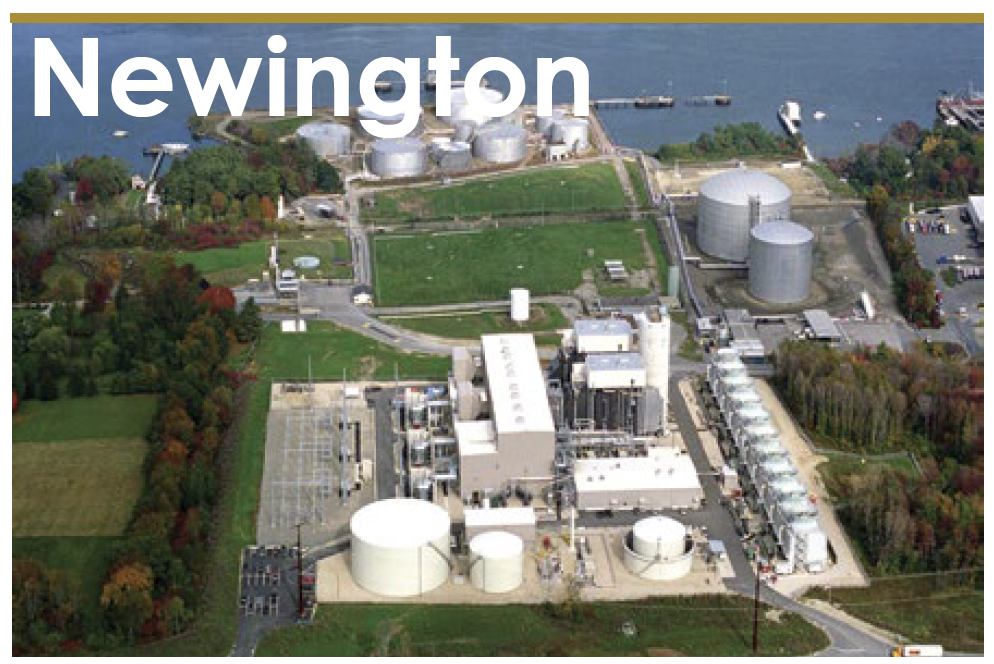In addition to the best practices published on CCJ Onsite earlier this week, here’s a new batch of ideas owner/operators of any gas turbine can employ at their facility.

ESSENTIAL POWER NEWINGTON (EPN), managed by Tom Fallon and operated by Cogentrix Energy Power Management, is a merchant facility that runs primarily on natural gas, and over the past decade has transitioned from consistent daily cycling to more seasonal operation. The plant’s 10-cell mechanical-draft cooling tower takes brackish makeup water from the tidal Piscataqua River. Two 50%-capacity main circulating-water pumps serve the steam turbine’s main condenser and Newington’s closed cooling-water system. These pumps are protected by primary and secondary removable debris screens located between the tower basin and the pump pits.
During long offline periods, EPN was experiencing more frequent and more severe fouling of the circ-water pumps’ debris screens than previously. Plus, staff observed appreciable sediment and microbiological fouling of the condenser. Further, during online periods, especially on hot summer days, condenser backpressure increased, reducing steam-turbine output when most needed.
The site’s debris-screen cleanings require contracting for mobile-crane and vacuum-truck services—an added cost, along with the increased potential for personnel injuries during the cleaning process.
Root cause of the fouling: Excessive biological growth in the cooling-tower basin and circ-water system. The site’s policies and procedures had been to dose the basin with sodium hypochlorite while the plant was online. But with operation curtailed, personnel realized a different approach was needed.
A comprehensive study determined the existing online dosing regimen needed augmentation with offline dosing. This would allow the presence of a measurable chlorine residual in the circ-water system when EPN was not operating. Subsequently, personnel began a thorough review of the procedural, administrative, and engineering changes required to allow for the successful implementation of new practices.
Of primary concern was ensuring that no measurable amount of chlorine would be discharged inadvertently (a violation of the plant’s environmental permit) over a potential offline period of several days and multiple shift changes.
Operationally, this presented some very real practical concerns and adjustments: Cooling-tower basin level would have to be reduced significantly during offline dosing to accommodate the approved low-volume waste streams plantwide while keeping permit-limited tower salinity at manageable levels without the option of tower blowdown and being more conservative with sodium hypochlorite dosage—all while maintaining Newington ready to run.
An operating procedural update was made to account for the new shutdown dosing regimen, as well as an associated checklist that would remain active for the dosing period. This allowed site personnel to have an identifiable point in the process at any moment, as well as a guidance on what steps were next.
Conspicuous signage now is displayed at the control-room console prohibiting the operator from opening the tower blowdown valve from the commencement of dosing until free chlorine is below the detectable limit, which might be days later.
In addition to these administrative controls, an engineering control was implemented through the use of a DCS software lock (inhibit function) on the cooling-tower blowdown valve, which is enabled at the start of a dose, creating an additional step to reduce the likelihood of inadvertently opening the valve when chlorine is still present.
Once these processes were fully in place and personnel trained, a steady program of cooling-tower dosing began during the offline periods when the plant was not selected to run in the market.
Results: One of the first things staff noticed was the significant reduction in chlorine consumption, residual chlorine being more effective with the new dosing system because it remains in the system longer than previously. This allowed operators to reduce the chlorine dosing-pump run times from what was once typically up to an hour, down to as little as 10 to 15 minutes for the same measurable residual.
Also found was that during the first outage after implementation, a full cleaning of the cooling-tower basin was no longer needed. This was a significant savings on contractors, pressure washers, rented vacuum trucks, and outage timelines.
The number of cooling-tower-pump debris-screen cleanings also went down to just infrequent occasions in the fall when leaves are introduced into the basin. This was an enormous cost saving.
The other benefit noted was a consistently lower backpressure on the condenser while online in summer. During the high demands of the summer peak season, that can really make the difference in meeting the plant’s dispatch targets.
During these periods of change in powerplant operational profiles, it’s the realization and implementation of the simple changes that can make a significant difference to the material and economic condition of the plant. Although the change described above was quick to identify, it was fully studied and implemented to comply with all environmental permitting and operational requirements associated with the systems involved.
Overall, the new dosing process has realized significant cost saving for the plant, with no impact to the environment and with minimal investment. While a change such as dosing time may seem minor, sometimes it really is the small changes that make the biggest impacts.
How to remove air from your GT water-injection system
EPN operates primarily on natural gas with sporadic operation on fuel oil in winter. When running on oil, demineralized water is injected into the combustors to reduce NOx emissions. Water is supplied at up to 250 gpm per unit from the demineralized-water storage tank to a high-pressure, variable-speed injection pump located alongside each gas turbine.
The water-supply piping system, approximately 1000 ft long, has over a dozen elevation changes from 6 ft below grade to 70 ft above, between the forwarding pumps and the inlet flange to each injection pump.
During long offline periods, air accumulates in the piping and is trapped at numerous high points in the system. When water injection is initiated, air is carried into the injection pumps, causing pressure transients that have, at times, shut down the water injection system and the gas turbines.
Over the years, personnel added numerous manual vents, as well as several small automatic air-release devices. However, access to and operation of the vents has been problematic, especially in winter, given their number and the outdoor location of several. While manual venting had reduced the frequency of events, it had not eliminated the problem and numerous manual operations were required to complete fuel-oil transfers.
The vents also had to be left open for extended periods as the entrained air traveled through the system. As GT load and water-injection flow increased, new pockets of air would appear at vent points. Despite an intricate procedure and numerous vent points, it was still commonplace for water-injection pressure transients to disrupt operation after long periods of system layup.
Staff elected to install a high-volume vortex air separator, with an automatic air release, in the demin-water forwarding piping at the inlet to each water-injection skid. Detailed engineering was performed by site and corporate field services personnel. The vessel and piping were sized for 96% air-removal efficiency at full flow. The majority of the piping was prefabricated and the separators were installed in four days during a planned outage. Operating procedures and applicable drawings were updated and operations staff was trained in the revised operating procedures.
The site completed its full-load liquid-fuel operation audit without any water-injection-system or gas-turbine trips caused by forwarding-system air entrainment or pressure transients. Success of the system changes was verified in the winter as the site operated on oil over a dozen times with no events related to air entrainment. This change has reduced manual operator intervention during fuel-oil transfers and has greatly improved liquid-fuel-system reliability. Reduced venting and the eliminating of continuous manual venting also has reduced demin-water consumption.

EMERGENCY RESPONSE TRAINING AT RUMFORD POWER, a process safety management site that uses anhydrous ammonia for gas-turbine inlet cooling. The plant is a participating member in the local emergency planning committee (LEPC).
Not having a facility-based hazmat team, Rumford would rely on its relationships with the local fire department and hazardous response unit in the event of an uncontrolled ammonia release. Staff annually participated in a table-top exercise (TTX), gathering members of the plant, fire, police, hazmat, paramedics, local regional dispatch, and the hospital to talk through potential scenarios and go over the process of what a response to those situations would look like.
The event created a camaraderie between the plant and first responders, and was a knowledge-share, usually creating follow-up actions or plant tours to show first responders the site and where they would be responding to in the event of an emergency. A unique learning situation was created by the Covid-19 pandemic, when in-person TTX was not realistic.
Zoom to the rescue! Rather than taking a “pass” on the year, with all participating personnel available to participate remotely, Zoom was the platform chosen, because of its breakout rooms for side discussions.
The scenario (italics below) for the TTX developed in collaboration between the plant and the LEPC deputy director was split into the following two modules:
Module 1: The two Rumford Power employees on duty begin the startup process at the facility. One employee is in the control room, one outside. The employee in the control room notices a vehicle approach the gate, where it sits for several minutes. The employee calls 9-1-1 to report the suspicious vehicle.
While on the phone with 9-1-1, the vehicle drives through the gate and into the plant. The employee reports seeing on camera, the driver’s arm outside the window of the vehicle holding what looks like a handgun.
Module 2: The vehicle makes multiple laps around the facility, and then leaves the property. Upon reviewing the camera footage, the employee notices a vapor cloud near the anhydrous ammonia lines outside the facility. Soon after, the south ammonia ceiling detector begins to alarm (150 ppm) indicating a leak.
The scenario presented several items for discussion: from suspicious activity, to security breach, to anhydrous ammonia release; plus, it tested communication and coordination between the plant and multiple first responders. Once the meeting commenced, the “scenario” was presented to plant employees onsite that day, a 9-1-1 call was simulated with the regional communications center, and the event played out testing reactions and emergency response procedures in place both onsite, and with the first responders.
Breakout rooms were created so plant personnel and first responders could congregate (1) to develop initial action items and then get back together, (2) simulate developing an incident command structure, and (3) gather plant information and share it with first responders so action plans could be developed.
The two modules were played out back-to-back, with initial communication made from the plant to the regional communications center. Following the initial trigger of site “Emergency Response Plan for Suspicious Activity” and generating a response from police, the site personnel answered questions to provide information to the first responders.
Once completed with the initial module, a new discovery was made of a potential anhydrous ammonia vapor cloud being picked up on plant security footage that was being reviewed by staff to gather more information on the gate breach, which expanded the interagency response and brought in fire and hazmat response and planning in the situation.
The after-action report and improvement plan revolved around two main core capabilities: operational coordination and operational communication.
Coordination strengths included the following:
- Quick notifications to mutual aid resources and supporting organizations while mobilizing needed resources.
- Hospital quick notification allowed setup of mass decontamination capability if needed at the hospital for patient surge or chemical exposure treatment.
Areas of improvement included these:
- Increased visibility and familiarity for first responders. Facility tours were provided for all first responders. Rumford Fire had many training experiences at the plant, but the Rumford Police Dept had not. Thus, familiarization training was provided to all PD staff. Large signs were made, at the suggestion of first responders, to label the sides of the building (A, B, C, D) and to number doors. These action items were completed by Rumford employees.
- Harden the plant for safe place of refuge in event of a facility breach. Rumford follows CIP-003 protocols for physical security with fence, gates, and locked doors. As an added measure, deadbolts were strategically located so plant staff could create a safe room if a breach around the outer security level at the site were to occur.
Communication strengths from the TTX were the results from the simulated 9-1-1 call with dispatchers. Walking through all questions from the playbook showed plant staff what would be asked if the scenario were to arise. The Zoom break-out rooms were also deemed to be a benefit to the exercise to create an “isolation” like a real event would be, not having everyone at the same table as had been performed in years past. The plant had previously purchased a two-way radio to communicate directly with first responders if the need were to arise. A test was conducted with first responders to confirm proper operation and programming of the radio.
As a result of these activities and outcomes, the plant was named Oxford County LEPC Facility of the Year.









